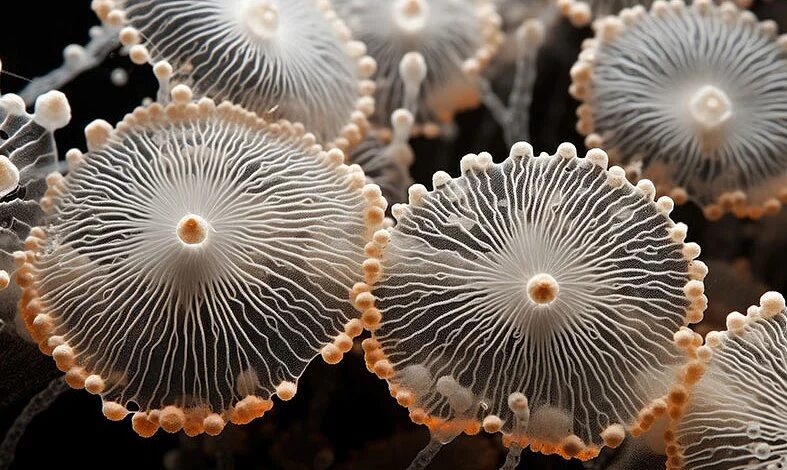Calls for Ukraine
Calls for Europe
Calls for USA

Researchers have found that molecules from the toxic fungus Aspergillus flavus, which is often found in ancient graves, have a powerful anti-cancer effect. In experiments with leukemia cells, these compounds showed efficacy comparable to drugs approved by the US Food and Drug Administration (FDA). The study’s findings open up new horizons in the development of anti-cancer drugs based on fungal compounds.
Aspergillus flavus is a toxic mold with yellow spores, known for its health hazards. It secretes toxins that can cause fatal lung infections, especially in people with weak immune systems or chronic diseases. The fungus is found everywhere: it can be found in soil, decaying organic matter, cellars, tombs, and poorly stored grains and dried fruits.
Aspergillus flavus gained popularity after the mysterious deaths of several archaeologists who participated in the excavation of Tutankhamun’s tomb in the 1920s. This gave rise to rumors of the “curse of the pharaoh,” but doctors later suggested that the cause of death was an infection caused by fungal spores that had been stored in the tomb for millennia.
In addition, A. flavus may have been linked to the deaths of 10 of the 12 scientists who explored the tomb of Polish King Casimir IV in the 1970s. Further analysis confirmed the presence of large amounts of this fungus spores in the burial site.
Despite their danger, many fungi have valuable medicinal properties. In a new study published in the journal Nature Chemical Biology, scientists from the University of Pennsylvania showed that A. flavus could be an unexpected source of anti-cancer compounds. “Fungi gave us penicillin,” says Sherry Gao, associate professor at the University of Pennsylvania and lead author of the study. “Our results show that there is still a lot of unexplored potential in natural compounds for drug discovery.”
Promising action against leukemia
The researchers isolated a special class of peptides from the fungus — ribosomally synthesized and post-translationally modified peptides (RiPPs). Detecting them is difficult because fungal RiPPs are often confused with non-ribosomal peptides. While thousands of bacterial RiPPs are already known, only a few have been found in fungi.
Gao’s team analyzed 12 strains of Aspergillus to identify the most promising RiPPs. It turned out that the compounds produced by A. flavus have high biological activity. These peptides are encoded by a specific protein, and its deactivation completely stopped their production.
The scientists isolated four RiPPs from A. flavus and found that they have an unusual structure of nested rings. The new molecules, called “asperigimycins,” demonstrated significant anticancer activity. Two of them were particularly effective in suppressing leukemia cells.
Further studies showed that asperigimycins disrupt the process of cell division by blocking the formation of microtubules. This explains their anti-cancer effect, as cancer cells are characterized by uncontrolled reproduction.
Efficacy on par with approved drugs
In another experiment, the scientists added a lipid to RiPP—a component of royal jelly, a nutrient that bees produce to feed their larvae and queen. As a result, the combination showed efficacy comparable to cytarabine and daunorubicin, drugs that have been used for decades to treat leukemia.
Lipids helped the new compounds penetrate cells. To understand the mechanism of this effect, the researchers selectively activated and deactivated genes in cancer cells. It turned out that the SLC46A3 gene plays a key role in regulating the penetration of aspergillicins into cells through lysosomes.
“This gene acts as a gateway,” explains Qiuye Ni, co-author of the study. “Not only does it facilitate the entry of aspergillomycin into cells, but it can also help other cyclic peptides that typically require modification for effective penetration.”
At the same time, aspergillomycins had little effect on breast, liver, and lung cancer cells, as well as bacteria and other fungi. This indicates their selective action.
In addition, scientists have discovered similar genes in other fungi, suggesting the possible existence of unexplored RiPPs with therapeutic potential. The next step will be to test aspergillimycins in animal models and, if successful, in clinical trials.
Please rate the work of MedTour
